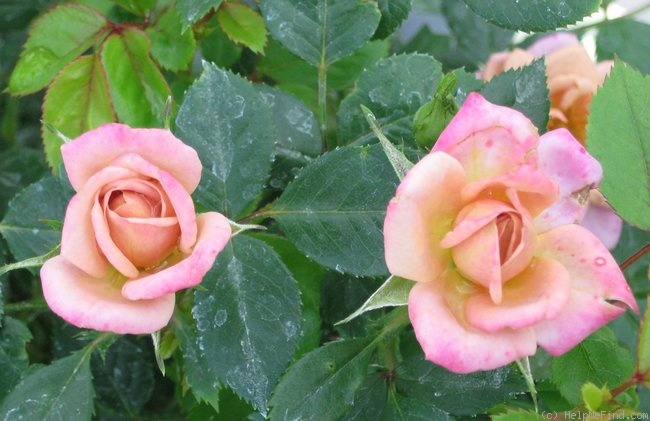|
|
'Caramel Kisses ™' rose Description

Photo courtesy of Jean Marion
ARS:
Mauve or mauve blend Miniature. Registration name: JACdandyExhibition name: Caramel Kisses ™
Class:
Miniature. (Series: Garden Ease ™ Collection)
Bloom:
Mauve or purple blend. Lavendar and tan. None to mild fragrance. up to 25 petals. Average diameter 1.5". Small to medium, double (17-25 petals), borne mostly solitary, in small clusters, high-centered bloom form. Blooms in flushes throughout the season.
Habit:
Medium, compact. Small, glossy, dark green foliage. 5 leaflets.
Height: 32" to 40" (80 to 100cm). Width: 32" to 3' (80 to 90cm).
Growing:
USDA zone 6b through 9b (default). Can be used for beds and borders, container rose, cut flower or garden. Disease susceptibility: very disease resistant. Remove spent blooms to encourage re-bloom. Spring Pruning: Remove old canes and dead or diseased wood and cut back canes that cross. In warmer climates, cut back the remaining canes by about one-third. In colder areas, you'll probably find you'll have to prune a little more than that.
Patents:
United States - Patent No: PP 19,485 on 25 Nov 2008 VIEW USPTO PATENTApplication No: 11/998,353 on 28 Nov 2007 Inventors: Zary; Keith W. (Thousand Oaks, CA)
....originated by me by crossing the rose plant `JACbow` (U.S. Plant Pat. No. 11,690, seed parent) with the rose plant `Chipmunk` (unpatented, pollen parent)....Observations were made from January 2006 to October 2007 of plants of the new variety grown in a garden environment in Somis, Calif. The observations below are of three year old plants.
|